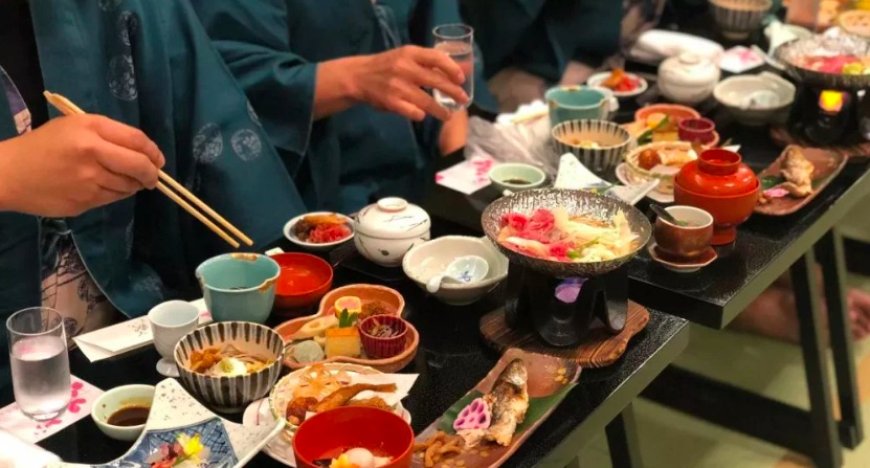Things to keep in mind when eating in Japan
Japanese culture has always been characterized by hard work, respect and fairness. When you eat and drink here, there are a few things to keep in mind to respect and assimilate into this unique culture.

1. No tip required
Out of respect for the principle of fairness, tipping from tourists is not common in Japan. Some restaurants charge a service fee of 10-15% of the total bill, so you don't need to tip. Most waiters will politely decline a tip, but there are cases where some may accept a tip to avoid embarrassing guests.
2. Take off your shoes when entering Izakaya
Izakaya (bar and snack bars) often ask customers to take off their shoes and leave them in a locker at the entrance. This is rooted in a long tradition and helps to create a comfortable space for guests to enjoy alcoholic beverages and snacks.
3. Food is served by each course
In Japan, it's common for food to be served individually with a 10-20 minute interval. Snacks or quick are served first. The more time consuming dishes will be delivered when they are cooked. If you are eating with a group, it may happen that others in the group finish the dish before you have even started. Here's how to make sure your food stays as fresh as possible.
4. Otoshi is not always free
Otoshi is a small snack served while waiting for the main food. This dish is usually added to the bill when you order a drink, the average price is 400-700 yen (3-6 USD). Otoshi allows you to avoid feeling hungry while waiting for your main meal. Notably, the content of the otoshi will vary from restaurant to restaurant, such as steamed meat, vegetables, pickled cucumbers, traditional salads, grilled fish or noodles.
5. Don't leave leftovers
Japanese tradition considers leaving leftovers on a plate as rude and wasteful. This reflects the concept of "mottainai" - regret about waste. Therefore, Japanese food portions are usually smaller to avoid food waste. However, if you have allergies or are unable to complete a meal, it is sufficient to inform the service staff.
6. Fast food stores
Portions at fast food restaurants in Japan are often smaller than in many other countries. This is related to the concept of "mottainai" as mentioned above. If you are in need of a quick and economical meal, fast food restaurants in Japan will meet your needs.
7. Difference between Buffet and Tabehoudai
Tabehoudai is different from the traditional buffet. This is a buffet service on the menu that allows you to eat comfortably for a fixed price. Tabehoudai meal time is usually between 90-120 minutes. Depending on the restaurant, you will either serve yourself or have the staff bring your food to the table. Some restaurants also provide mini grills for you to grill your own meat.
8. Don't eat on the go
In Japanese culture, eating on the go is considered rude, especially in public places like temples or shrines. Japan prides itself on the cleanliness of its roads and outdoor eating can cause a lot of waste. Unless you're near public places like vending machines or during street food festivals, avoid eating while you're on the go.
With the above in mind, you'll be able to enjoy a great dining experience while dining in Japan while respecting the local culture and customs. Try traditional dishes and discover the unique food culture of this country when you get the chance.

























































































